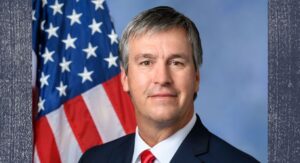Robert Bentley says Alabama will see cuts in Medicaid services due to budget

Following the Alabama Legislature’s vote to override Gov. Robert Bentley‘s veto of the General Fund budget, Bentley announced announced at a press conference Wednesday the Alabama Medicaid Agency is considering several significant cuts to their services in an effort to operate within the means of the new 2017 budget. Bentley said the budget comes up $85 million short of what the federal government requires for assistance. “For a number of years we have tried to make our Medicaid agency more effective, more steam-lined, and more efficient,” Bentley said. “We have tried to improve the lives of the people in this state, the one million people who depend on medicaid… and we did that.” Bentley said he has asked the Medicaid Agency, which provides health care to roughly one million Alabamians, to come up with a list of possible cuts to be reviewed within the coming days. Medicaid Commissioner Stephanie Azar joined Bentley listing some options up for consideration such as eliminating prescription drug coverage for adults, adult eyeglasses, prosthetics, outpatient dialysis, or requiring patients to go to one big box pharmacy, among others. “I think today it is very important for recipients to know that their access to care is at risk and for the Medicaid providers in the state to start preparing for the impact of these cuts,” Azar said. The governor has previously suggested he might call a special session on Medicaid funding, but said Wednesday that he has yet to make a decision. “We are going to have to make some very tough decisions. After we look at the options, we will make those tough decisions,” said Bentley.
Why Bernie Sanders keeps winning but may not be Democratic nominee
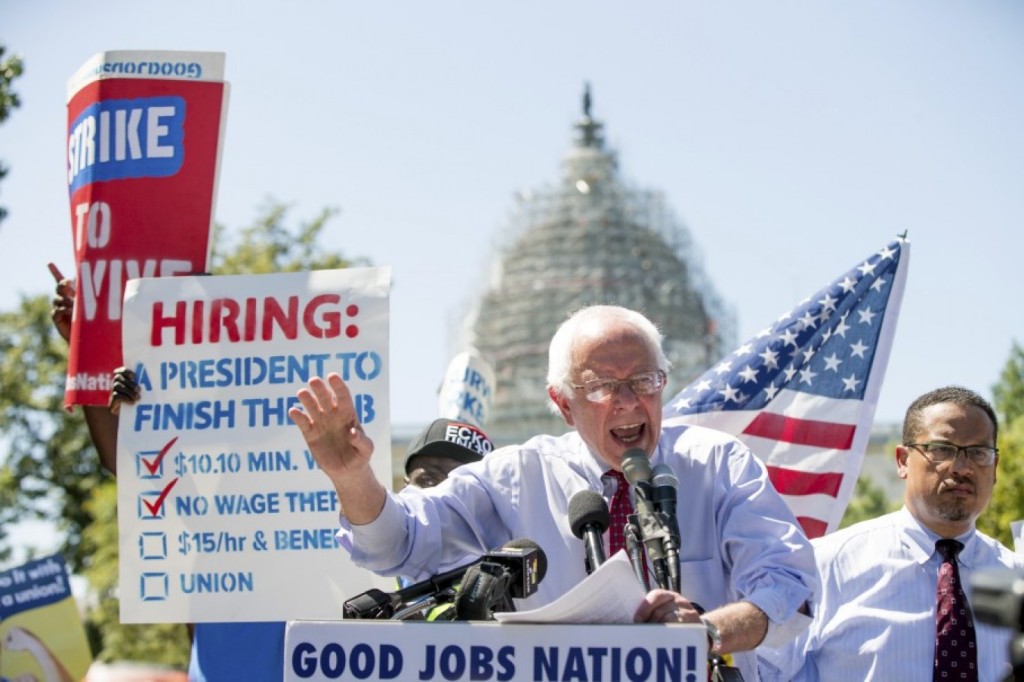
The standard line in Bernie Sanders‘ campaign speeches goes like this: “Despite what the corporate media is telling you, there is a path to the nomination.” If such a track exists, it’s far from clear what it is. Sanders is far behind Hillary Clinton in the race for delegates that will decide the nomination. He’ll need 68 percent of those remaining to win. Even after his recent run of success, Sanders is nowhere near that pace. And it’s not the corporate media he should be blaming, but the rules of a Democratic Party he only recently joined after serving decades in public office as an independent. The party has tailored its nominating process specifically to prevent an upstart candidate such as Sanders from winning its nomination for president. And Sanders’ top adviser, by the way, is a longtime Democratic Party insider helped write those rules. ___ HOW IT WORKS One word: Delegates. Not states won, not debate triumphs, not cash raised. Certainly not what the Sanders campaign calls “momentum.” The nominating contest is about winning 2,383 delegates, and the delegate math says Clinton is decidedly ahead of Sanders. The basics: All Democratic contests award delegates in proportion to the share of the vote — so even the loser gets some. That makes it hard for a front-runner to collect delegates and clinch the nomination as quickly as when the winner takes all. But the proportional system also makes it difficult for a trailing candidate to catch up if he or she falls behind by a large number. Clinton was able to amass a big delegate lead — at one point more than 300 delegates — by winning by large margins in the South, where there are large minority populations that largely back her over Sanders. In contrast, Sanders has mostly won smaller states that hold caucuses or won narrowly in larger states such as Wisconsin and Michigan, which has limited the number of delegates he’s netted in his effort to catch up to Clinton. To date, Sanders trails Clinton by close to 2.4 million total votes cast and by more than 200 delegates. In 2008, when Clinton trailed Barack Obama by more than 100 delegates, she was never able to catch up to him. The current count: Clinton has 1,280 delegates won in primaries and caucuses to Sanders’ 1,030. ___ WHAT ABOUT SUPERDELEGATES? Another factor: 15 percent of the delegates who get a vote at the Democratic National Convention are superdelegates, or elected officials and party leaders who can back any candidate they wish. They are the party establishment. And they overwhelmingly support Clinton. The Associated Press surveys those superdelegates and adds them to the tally if they say publicly whom they plan to vote for at the convention. The AP doesn’t count those who say they’ve decided, but aren’t willing to say so “on the record.” Clinton’s strong support among superdelegates widens her lead even more — 1,749 to Sanders’ 1,061. ___ HOW IT GOT THIS WAY For decades, the leaders and activists of the Democratic Party struggled to control its presidential nominating process. The back-and-forth gave birth in 1984 to the superdelegate. They are insiders and political pros who are not bound to any candidate, and they act as deciders in prolonged nomination fights. The original idea was to give party elders a voice in the nominating process to avoid a repeat of what some viewed as a mistake in the 1972 election, in which George McGovern won the nomination but proved to be a weak general election candidate. He lost 49 states in the November vote. In 1984, under the superdelegate system, former Vice President Walter Mondale was the choice of the Democratic establishment and won the party’s presidential nomination. He, too, lost 49 states in the general election. ___ SANDERS’ SUPERDELEGATE CONNECTION Tad Devine, Sanders’ top adviser and a Democratic Party veteran of more than three decades, helped craft the superdelegate process. He’s been quoted defending it — “It’s pretty hard to win a nomination in a contested race and almost impossible to win without the superdelegates,” he observed in a 2008 interview on National Public Radio — and also pointing out that there’s a danger of backlash if superdelegates wield too much power or operate in a less-than-transparent way. Devine told the AP last month that the Sanders campaign expects the superdelegates to choose a candidate “after the voters have spoken — not before.” ___ WHAT’S UP IN WASHINGTON STATE? Sanders won the Washington state caucuses by more than 40 percentage points, but he has only 25 of the state’s 101 delegates. (Clinton has nine.) Washington Democrats award most of their delegates based on vote totals in individual congressional districts. But the party has been unable to produce vote totals for each of those congressional districts. As soon as the state party parses the votes, the delegates can be allocated and Sanders’ total will jump Republished with permission of the Associated Press.
Forbes reveals Alabama’s wealthiest resident, Garry Drummond
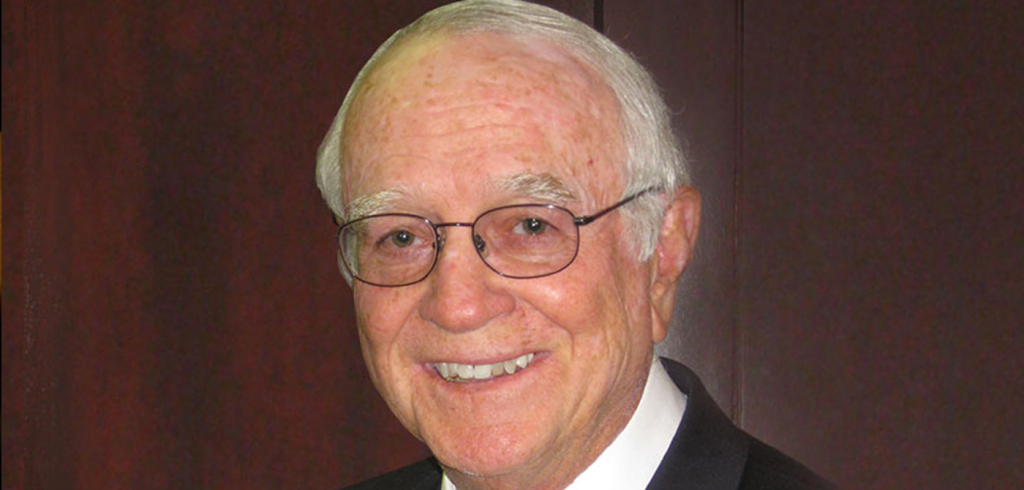
For the second year in a row, coal king Garry Drummond has been named Alabama’s wealthiest person by Forbes magazine. Drummond, who’s estimated net worth is $600 million, became Alabama’s wealthiest person after Marguerite Harbert, the state’s sole billionaire died last March. In 1961, after completing a degree in civil engineering from the University of Alabama, Drummond began his career with Drummond Company, Inc. — a Birmingham based company involved in the mining and processing of coal and coal products as well as oil and real estate — and became CEO in 1973. According to Forbes, “eight decades ago, Drummond’s father put up three mules as collateral on a $300 bank loan from a rural Alabama bank; those beasts were an active part of the business, hauling coal from mines to the farms and homesteads that became his customers. That Depression-era industriousness paid off handsomely.” Drummond Co. currently has an estimate 2 billion tons of reserves in its mines in Alabama and Colombia.
Luther Strange calls on EPA to cancel rule to limit emissions from modified cars
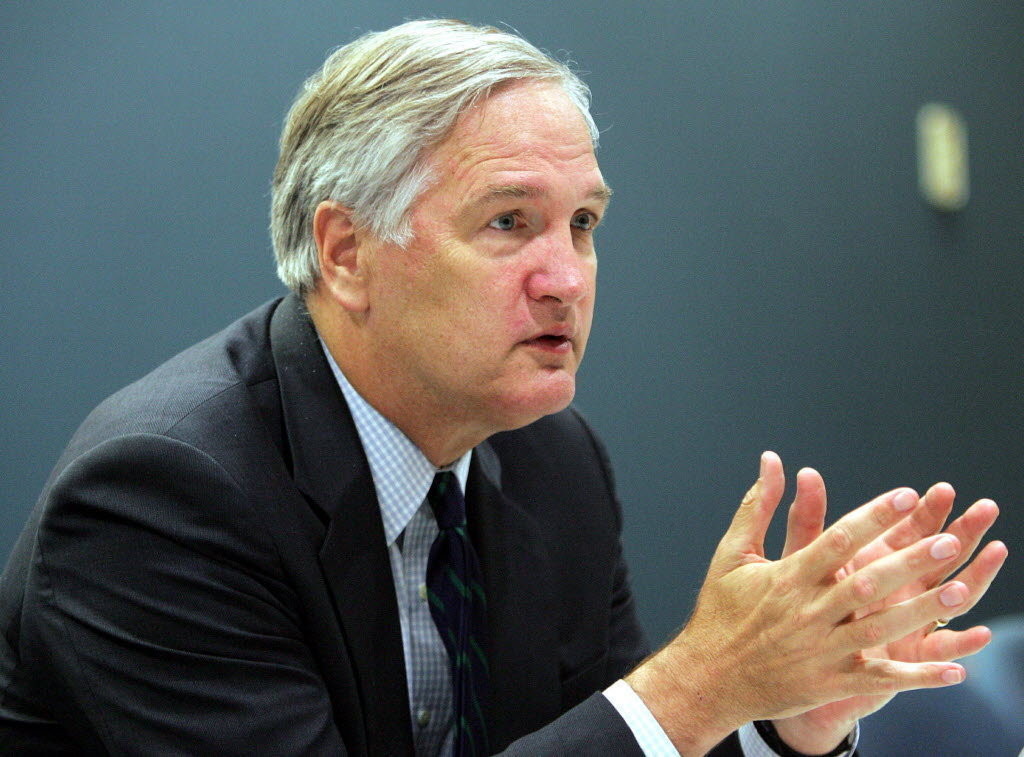
Alabama Attorney General Luther Strange is calling on federal environmental authorities to drop a proposal that would stop off-road racing hobbyists from removing or reconfiguring emissions control devices on modified street vehicles. Strange joined Attorneys General from seven other states in sending a letter to EPA Administrator Gina McCarthy asking her not to implement the proposed rule, saying it would effectively stall the industry related to conversion of street vehicles to racing vehicles. “In another example of federal bureaucrats seeking to expand their regulatory reach, the EPA is pushing a proposed change to the federal Clean Air Act to effectively prohibit street vehicles from being converted into off-road race cars,” said Strange. Strange said the move by regulators, if implemented, would be an economic blow to mechanics and parts suppliers who participate in the cottage industry of car modification. “In Alabama and across the country, modifying race cars is a popular pastime and a significant contributor to the economy,” said Strange. “In 2014, $36 billion was spent nationally on automotive specialty equipment parts and accessories. Off-road racing parts businesses which sell their products in Alabama and elsewhere, as well as local racetracks, would be adversely affected by the implementation of the new EPA rule.” The proposed rule mandates that “Certified motor vehicles and motor vehicle engines and their emission control devices must remain in their certified configuration even if they are used solely for competition or if they become non-road vehicles or engines.” The letter from Strange and the other attorneys general claims the EPA rule change is contrary to existing statute, and conflicts with the expressed intent of Congress not to subject race cars to the same federal emission standards as street vehicles. According to Strange, potecting race cars from emissions requirements was such a concern when Congress passed the Clean Air Act in 1970 that Alabama Congressman Bill Nichols – who represented Talladega, the notorious hometown of Deep South auto racing – specifically asked that the environmental reform law not penalize “vehicles and vehicle engines manufactured for, modified for or utilized in organized motorized racing events.” The other state joining Strange were Arkansas, Georgia, Louisiana, Michigan, Nevada, Ohio, and West Virginia, all states with Republican attorneys general.
Alabama House passes anti-human trafficking bill

The Alabama House has approved a bill to crack down on predators seeking to purchase sex via human trafficking, what many consider the last existing form of slavery in the United States. The bill – HB 433, dubbed the “Safe Harbor Act” – passed the House on a unanimous 103-0 vote on Thursday. Rep. Jack Williams, who chairs the Legislature’s bipartisan Alabama Human Trafficking Task Force formed in 2014, sponsored the bill. The legislation is designed to treat minors caught up in the sex trade as victims, rather than willful law breaker, as it often the case now. HB 433 provides that any minor found to have committed prostitution under state law not be transferred to or tried in adult court, and that a list of services including counseling, substance abuse treatment, legal representation, and medical treatment be made available to them. The bill also requires Alabama businesses operating an “escort business of companionship” to registered with the Secretary of State, and provides for penalties for violations of the rules therein. A similar bill, SB 368 by Democrat Sen. Vivian Figures, was also introduced this Session, but has not gotten a hearing in the Senate Judiciary Committee. Advocates for sex trafficking victims have estimated the trade is the second-largest criminal industry in the U.S., topped only by illegal drugs.
AP Poll: Americans overwhelmingly view Donald Trump negatively
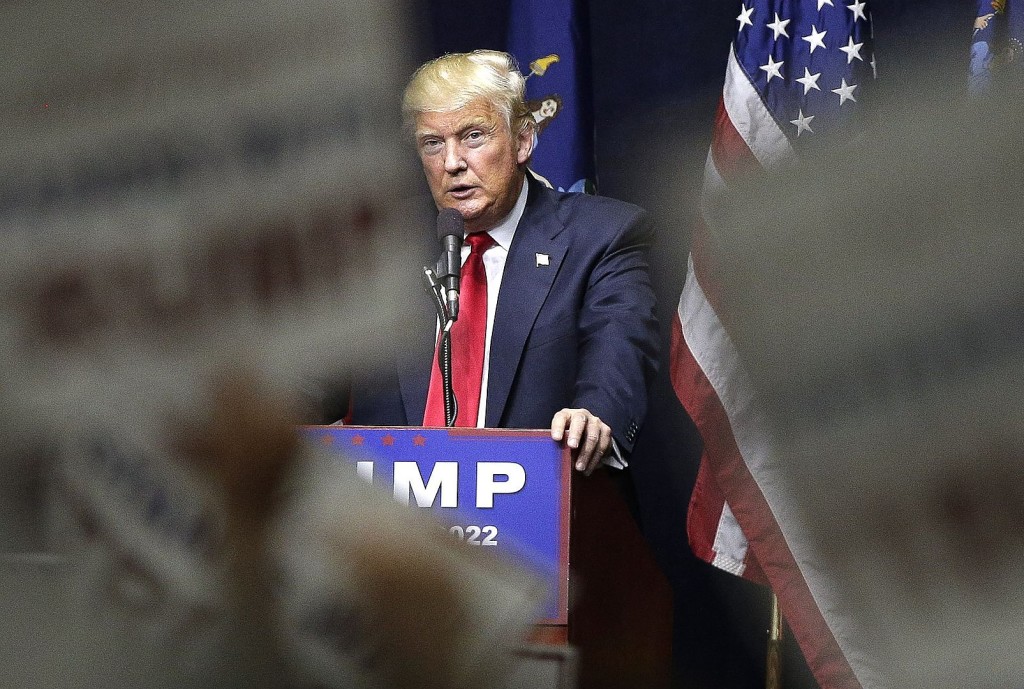
For Americans of nearly every race, gender, political persuasion and location, disdain for Donald Trump runs deep, saddling the Republican front-runner with unprecedented unpopularity as he tries to overcome recent campaign setbacks. Seven in 10 people, including close to half of Republican voters, have an unfavorable view of Trump, according to a new Associated Press-GfK poll. It’s an opinion shared by majorities of men and women; young and old; conservatives, moderates and liberals; and whites, Hispanics and blacks — a devastatingly broad indictment of the billionaire businessman. Even in the South, a region where Trump has won GOP primaries decisively, close to 70 percent view him unfavorably. And among whites without a college education, one of Trump’s most loyal voting blocs, 55 percent have a negative opinion. Trump still leads the Republican field in delegates and has built a loyal following with a steady share of the Republican primary electorate. But the breadth of his unpopularity raises significant questions about how he could stitch together enough support in the general election to win the White House. It also underscores the trouble he may still face in the Republican race, which appears headed to a contested convention where party insiders would have their say about who will represent the GOP in the fall campaign. “He’s at risk of having the nomination denied to him because grass-roots party activists fear he’s so widely disliked that he can’t possibly win,” said Ari Fleischer, a former adviser to President George W. Bush. Beyond their generally negative perception of Trump, large majorities also said they would not describe him as civil, compassionate or likable. On nearly all of these measures, Trump fared worse than his remaining Democratic or Republican rivals. Not that voters have all that much love for those rivals. But their negative perceptions don’t match the depth of the distaste for Trump. Texas Sen. Ted Cruz, who is seeking to catch Trump in the Republican delegate count, is viewed unfavorably by 59 percent, while 55 percent have negative views of Democratic front-runner Hillary Clinton. Another problem for Trump is that his public perception seems to be getting worse. The number of Americans who view him unfavorably has risen more than 10 percentage points since mid-February, a two-month stretch that has included some of his biggest primary victories but also an array of stumbles that suggested difficulties with his campaign organization and a lack of policy depth. A survey conducted by Gallup in January found Trump’s unfavorable rating, then at 60 percent in their polling, was already at a record high level for any major party nominee in their organization’s polling since the 1990’s. Candi Edie, a registered Republican from Arroyo Grande, California, is among those whose views on Trump have grown more negative. “At first, I thought he was great. He was bringing out a lot of issues that weren’t ever said, they were taboo,” Edie said. Now the 64-year-old feels Trump’s early comments masked the fact that he’s “such a bigot.” “I don’t know if he’s lost it or what,” she said. “He’s not acting presidential.”Trump’s unpopularity could provide an opening for Cruz, though he is loathed by many of his Senate colleagues and other party leaders. After a big win Tuesday in Wisconsin, Cruz is angling to overtake Trump at the July GOP convention. Clinton’s campaign believes Trump’s sky-high unfavorable ratings could offset some questions voters have about her own character, and perhaps even give her a chance to peel off some Republicans who can’t stomach a vote for the real estate mogul. Andrew Glaves, a “hard core” Republican from Bothell, Washington, said he might have to side with Clinton if Trump becomes the nominee, even though she’s out of step with his views on gun rights, his top election issue. “I’d be willing to take that as opposed to doing so much harm to the country’s reputation,” said Glaves, 29. More than 60 percent of all registered voters and 31 percent of Republicans said they definitely would not vote for Trump in the general election. One group that is still with him includes those who describe themselves as both Republicans and supporters of the tea party movement. Sixty-eight percent of them have a favorable view. Pennsylvania Republican Robert Paradis plans to vote for Trump in his state’s primary this month. The 76-year-old said that while Trump’s uneven temperament makes him cringe “all the time,” he’s hopeful the front-runner’s bluntness can shake up Washington. “He’s not a politician; he says it the way he feels it,” Paradis said. ___ The AP-GfK Poll of 1,076 adults was conducted online March 31-April 4, using a sample drawn from GfK’s probability-based KnowledgePanel, which is designed to be representative of the U.S. population. The margin of sampling error for all respondents is plus or minus 3.3 percentage points. Respondents were first selected randomly using telephone or mail survey methods and later interviewed online. People selected for KnowledgePanel who didn’t otherwise have access to the Internet were provided access at no cost to them. Republished with permission of the Associated Press.
Daniel Sutter: Postage stamps and hidden taxes

Postage stamps effectively tax millions of Americans each day. People are often unaware of the kind of taxes hidden in stamps. The economic landscape looks very different when one can see these taxes, which economists refer to as taxation through regulation or cross-subsidization. The U.S. Postal Service (USPS) is an independent agency of the Federal government and receives modest funding annually from Congress. But this is not the tax hidden in the price of stamps. The tax involves charging the same $0.49 first class postage for letters sent across town or across country. In a market, competition ensures that prices reflect costs. If mail were delivered by a competitive market, the lower cost of cross-town letters would yield a lower price. Let’s say that the market prices of cross-town and cross-country postage would be $0.30 and $0.70. Then the USPS charging $0.49 for all letters is economically equivalent to taxing cross-town letters and subsidizing long-distance letters. Professor Richard Posner of the University of Chicago first spelled out how prices can be used to tax one group of consumers to subsidize another. Cross-subsidization requires government control over prices, either directly, as with the USPS, or indirectly via regulation, as with insurance and banking, or trucking, railroads and airlines until the late 1970s. Cross-subsidization must overcome two challenges. First, the high prices cannot get undercut. The USPS could not continue to charge $0.49 for cross-town mail delivery if rivals could undercut the USPS’s price, steal customers away, and still make a profit due to the low cost. The USPS’s monopoly on first class mail delivery protects the high price against competition. In trucking and airline regulation, government regulators decided which carriers could serve each route. Second, consumers must purchase the over-priced service. The availability of competitively priced alternatives threatens cross-subsidization. The Interstate Commerce Commission, for example, started regulating railroads, but had to extend this regulation when trucks began hauling over-priced freight. Government can also require purchase of over-priced products, as with auto insurance, and health insurance under the Affordable Care Act. For politicians, cross-subsidization is wonderful. Consumers are often totally unaware of the taxes hidden in prices. And politicians can deny that they are taxing or subsidizing anyone, since no money goes through the public treasury. Artificially high prices allow the regulated firm to make up losses incurred serving some customers at less than cost. Thus regulated firms do not need government funds and may not oppose the system. Postage stamps also illustrate the most common form of cross-subsidization, namely having low cost customers subsidize high cost of service customers. Equalizing prices for different customers, as with first class mail, often seems fair to people. Low cost customers may not realize that they are paying too much, and high cost customers can be reminded of their good deal. Insurance regulation frequently cross-subsidizes high cost customers. The Affordable Care Act makes healthy young people buy over-priced coverage to lower premiums for persons with preexisting medical conditions. Property insurance in hurricane-prone states typically subsidizes high risk coastal properties. Coastal properties do pay higher premiums, but the rates are lower than justified based on the likelihood of loss. Defined benefit public employee pension plans also typically involve cross-subsidization. Here short-term employees subsidize employees who eventually retire through the system. Unfavorable rules for refunds of contributions for employees who leave before retiring help pay for generous benefits for retirees. Short-term employees would be better off under portable defined contribution plans. Benefitting lifelong state residents and employees at the expense of short-term state residents proves to be a popular policy for politicians. Tax day is approaching, and this annual ritual of filing a return raises awareness of and helps generate political pressure against raising income taxes. By contrast, government manipulation of prices effectively and secretly taxes some and subsidizes others. But if you look carefully, you can see the taxes hidden in postage stamps and other prices. • • • Daniel Sutter is the Charles G. Koch Professor of Economics with the Manuel H. Johnson Center for Political Economy at Troy University and host of Econversations on TrojanVision.
Ronda Walker: stop apologizing, celebrate hard work and excellence

Spring is in the air and little league baseball and softball fields across the country are filled with players, coaches and fans. Young kids are experiencing the crack of the bat for the very first time. Seasoned players are walking onto the field and taking in the smell of the freshly cut grass, the glow of the lights, the perfection of the bright white chalk that lines home plate. It’s springtime in America and that means baseball! But it also means something else, something unexpectedly shocking and disheartening. When did we as American society begin to devalue success? When did we begin to make excuses for being the best? When did that hook drop down and snag us in the cheek? Was it the excesses of the 1980s that expanded the chasm of the haves and have nots that created this resentment toward success? Is it white post-colonial guilt that has led to a weakened approach to competition? Instead of celebrating hard work and excellence we have become near apologetic when we do well. In some illogical and displaced attempt to make everyone feel good all of the time we’ve decided that no one should be elevated above another, for any reason. A great societal equalization program that we begin to implement full tilt when our children are in grade school. We see it in academic standards and teaching methodology in public schools across the country. But perhaps the most glaring example of our fear of winners and losers can be seen on the little league ball field. Children and young people everywhere are learning the joy of sports, they are learning the invaluable lessons of teamwork and effort. They are learning the thrill of victory and the agony of defeat. But wait, our politically correct worldview has decided we need to spare our kids from the agony of defeat. Yes, we must save their tender hearts from sadness and disappointment. Let the kids have fun, there’s no need to keep score, no need for winners and losers. And when the season is over, let’s just give all of them a trophy – they’re all winners. For the record, yes I am anti-participation trophy, but I will not rehash that argument here other than to say acknowledging the effort of every child on every team is a worthwhile endeavor. Such acknowledgement can be accomplished through the awarding of certificates, or perhaps a baseball or some other relevant token. To diminish the meaningfulness of a trophy by awarding one to both the winning team and the losing team creates a bent toward mediocrity in both groups. Will every swimmer at the Olympics in Rio this summer receive a gold medal? Certainly not! Will all members of the Olympic swim team receive special recognition for their accomplishments and efforts? Yes, they will and they should. But let’s get back to the whole agony of defeat thing. We do not need to crush our children in order to make them tough. It is not necessary for us to hit our children in order for them to understand the difference between pleasure and pain. However, when we teach our children that there is no correlation between hard work and success and we pour our effort into making life easy for them we fail them. It is when we want something badly enough that we invest our time, energy, and spirit into achieving our goal that we can appreciate the victory, the success. The main problem with protecting our children from failure and disappointment is we are lying to them and creating a rocky and false foundation for them to build their life expectations upon. There will never be a time in their life when there aren’t winners and losers and we need to teach our children how to both win and lose graciously. Instead of constantly gathering up all the pillows we can find and following our kids around with a cushy safety net, we must allow them to fail and learn to properly process disappointment and we must teach them to succeed with grace and humility. It is not our job as adults to prevent our children from ever experiencing failure and disappointment, our job is to be nearby when it happens and help them process those emotions and deal with the disappointment in a productive and healthy way, always assuring them of our love and support. That is the charge of parenting and it is tough work. As parents, we must stop taking the easy way out. No parent enjoys seeing their child red faced with tears of disappointment, but it is lunacy to think our role is to prevent that from ever happening. No, our role is to equip our children with the life skills necessary to cope with myriad emotions. Because I assure you, when they leave our nest no one will be running around behind them with a pillow in case they fall. Not their college professor, not their employer, not life, so why are we doing this for them and creating these false expectations? It is a disservice to them and to society in general. Last week I had the opportunity to help coach my daughter’s softball team. Margaret is seven years old and this is her first year to ever play softball. In the course of the past month she has gone from not knowing how to orient herself to home plate, to smashing the ball to center field for a stand up double. That improvement didn’t just happen organically, it came as a result of practice, focus, and hard work (and for the record, a lot of fun). From the beginning we taught Margaret the two most important things about playing sports are to listen to your coach and have a great attitude – do that, we assured her, and in time the skills will develop. After several weeks of practice she had her first ever at bat, and she struck out. Her form was
Alabama business roundup: Headlines from across state – 4/7/16 edition

Who’s laying off more a quarter of their salaried workforce? What company’s launching a $19 Alabama expansion? Who’s bringing more than 100 jobs to Dothan? Answers to all of these questions and more in today’s business roundup: Birmingham Business Journal: U.S. Steel to lay off a quarter of salaried workforce U.S. Steel Corp. (NYSE:X) announced this week it plans to lay off around 25 percent of its salaried workforce in North America. The cuts come less than a month after the embattled steel producer announced it would lay off 800 workers, including 200 union-represented employees in Alabama. The Pittsburgh-based company has roughly 21,000 employees in North America and about 18,000 are represented by the United Steelworkers union. A 25 percent cut to non-union workers should impact approximately 750 workers. Sarah Cassella, a spokeswoman for U.S. Steel, said the company is not providing an exact count as to how many jobs it plans to cut, or a locational breakdown. U.S. Steel saw a massive $1.5 billion loss in 2015 as the global steel market continues to struggle amid falling demand and competition from other sources both domestic and international. The majority of that loss can be attributed to a fourth quarter net loss of $999 million, when sales and shipments fell by 37 percent and 19 percent, respectively. The waves of U.S. Steel’s losses have been hitting the local manufacturing sector hard. Roughly $91 million of the company’s losses came locally. The blast furnace at the Fairfield Works facility was shuttered in August last year and work on a new electric arc furnace at Fairfield Works facility was postponed soon after, a halt which cost the company millions. More than 1,300 local workers have been laid off since the start of 2015. The company also announced cuts at its mill in Kosice, Slovakia. U.S. Steel’s annual shareholders meeting is scheduled for April 26. AL.com: Population grew in most Alabama metro areas in 2015 Alabama’s metro area population continued to grow, increasing by 14,754 people or 0.4 percent from July 1, 2014 to July 1, 2015, according to the population estimates from the U.S. Census Bureau. Population in non-metro areas of the state continued declining by 0.2 percent or by 2,186 people. Most metropolitan statistical areas saw an increase in their population, but some areas saw a decline. The largest increase of 4,028 people (0.9 percent) occurred in Huntsville while Daphne-Fairhope-Foley saw the largest percentage increase of 2.0 percent or 3,996 people in 2015. Birmingham-Hoover, Auburn-Opelika, and Tuscaloosa metro areas saw population increase of 2,824, 2,567, and 1,919 people, respectively. During the last year, population also increased in Dothan by 178 people, in Mobile by 469, and in Montgomery by 536 people. Meanwhile, the Anniston-Oxford-Jacksonville, Decatur, Florence-Muscle Shoals and Gadsden population declined. Looking closer at the components of population change gives a better understanding of underlying trends in metro area population. Six out of the 12 metro areas experienced both positive natural increase (births minus deaths) and positive net migration (in-migrants minus out-migrants) in 2015. Anniston-Oxford-Jacksonville, Florence-Muscle Shoals and Gadsden had both negative natural increase and net migration that year. For Florence-Muscle Shoals metro, 2015 represented a reverse trend in net migration—the number of in-migrants exceeded the number of out-migrants before, causing positive population growth during previous years. Dothan, Mobile, and Montgomery had births exceeding deaths, but the number of people moving out of the area was higher than the number of people moving into the area. A recent positive trend in employment may have some effect on future metro population. Only Anniston-Oxford-Jacksonville and Mobile saw a decline in annual employment during the period ending in February 2016, according to the preliminary data release by the Alabama Department of Labor. The declines represent 0.2 and 0.3 percent decrease in total employment or loss of 92 jobs and 493 jobs for these two areas, respectively. Other metro areas with population decline in 2015 saw an increase in the number of jobs: Decatur total employment increased by 74 people, Florence-Muscle Shoals by 576, and Gadsden by 1,012 people from February 2015 to February 2016. DATA: Population estimates are available at CBER website: http://cber.cba.ua.edu/edata/est_prj.html. Alabama NewsCenter: Auto supplier Mando launching $19 million Alabama expansion Mando America Corp. plans to invest $19 million in its Alabama manufacturing operation and hire 32 new workers to support the expansion, officials said Tuesday. South Korea-based Mando, one of the world’s largest auto parts suppliers, has based its North American headquarters in Opelika, where it makes brake components, suspension modules and steering systems for U.S. industry customers. As part of the expansion, Mando will add equipment and make improvements over the next three years to its facility in the Northeast Opelika Industrial Park. Once the project is complete, Mando’s Alabama investment will surpass $220 million and its workforce will number more than 700. Mando also expanded in Alabama in 2013 and in 2012. Opelika Mayor Gary Fuller, who announced the project at the City Council meeting, said Mando’s additional investment underscores the manufacturer’s confidence in its Opelika operation. . “Mando is very important to Opelika,” Fuller said. “They are one of our largest manufacturing employers, and we understand this continued investment is a testament to the success they have had in Opelika.” Accelerating growth Mando’s expansion comes amid a growth spurt in Alabama’s auto industry, which last year saw vehicle output eclipse the 1 million mark for the first time. Auto industry employment has surged, and rising production volumes have stimulated rapid growth in the state’s supply chain. “Alabama’s auto sector recorded a banner year in 2015, and it continues to gain momentum through expansion projects like Mando’s in Opelika,” said Greg Canfield, secretary of the Alabama Department of Commerce. “When world-class automotive companies repeatedly expand their operations in the state, the industry gets another reminder that ‘Made in Alabama’ translates into success.” Mando is recognized globally for its innovative automotive chassis components and systems. The company operates 17 production plants and eight research and development centers in 10 countries. “Mando’s new expansion project in
Alabama mayors call for action on transportation infrastructure
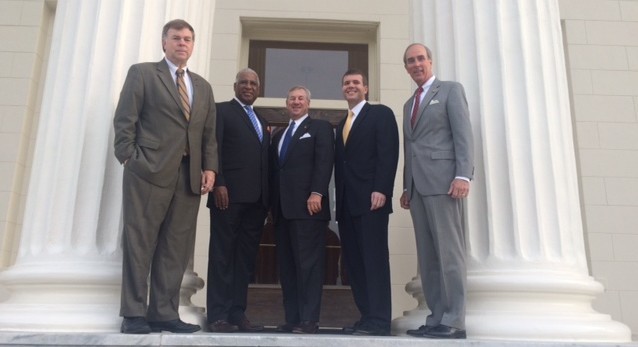
The mayors of Alabama’s five largest cities gathered Thursday in Montgomery where they called on state leaders to support efforts to improve transportation infrastructure in Alabama. The mayors from Birmingham, Huntsville, Mobile, Montgomery and Tuscaloosa said state legislators must identify funding for construction of new bridges, roads and highways as well as maintenance and repairs on existing infrastructure. “Infrastructure is one of the top factors in the competition for jobs and investment,” the five mayors said in a joint statement. “As local leaders, we recognize that there is a gap between current resources and needs. We support efforts to ensure that the state has adequate funds to address this basic responsibility of government.” The mayors, who collectively represent almost half of the state’s total population, met Wednesday with Gov. Robert Bentley along with leadership from the Alabama House and Senate. The delegation included Mayor Tommy Battle of Huntsville, Mayor William Bell of Birmingham, Mayor Walt Maddox of Tuscaloosa, Mayor Sandy Stimpson of Mobile and Mayor Todd Strange of Montgomery. In meetings with legislators and state officials on Wednesday, the mayors said it is up to elected leaders in Montgomery to determine how to pay for needed repairs and maintenance to Alabama roadways. The mayors said they would oppose the use or transfer of state transportation revenues for purposes other than transportation infrastructure. Here’s what each of the five mayors had to say: Mayor Tommy Battle of Huntsville: Economic development is tied to infrastructure, and infrastructure means jobs. As mayors, it is our responsibility is to provide the essential ingredients in our cities to ensure economic success. State government has the same responsibility. Mayor Todd Strange of Montgomery: The five of us represent nearly half of our state’s population, and we understand the immediate needs, challenges and ambitions of our residents on a tangible level. What our residents need right now are solutions to the infrastructure and transportation issues threatening to slow down Alabama’s economic progress and pose a safety risk to our citizens. Mayor William Bell of Birmingham: There is a critical need for state transportation funding for infrastructure in the City of Birmingham and around the state of Alabama. Our hope is that by speaking with one voice, we make a bigger impact and have that voice heard. Mayor Walt Maddox of Tuscaloosa: Strong public infrastructure creates strong cities. Having a strong highway system which meets Alabama’s safety, mobility and economic needs must be a common cause which unites us all. Mayor Sandy Stimpson of Mobile: We have neglected our infrastructure for too long as a state. Fixing our roads and bridges will make us safer, more competitive and improve the quality of life for all Alabamians.
Ed Moore: The presidential campaigns make me worry about America’s future

I often lament how little we learn from that which has come before in our political and governmental processes. It seems like each decade we drop time off the front end of our experiences, as if there is only so much room in our memories for what we have experienced. What else could explain our repeated willingness to follow a new “Pied Piper” every four years, promising the world but offering few solutions. We allow our frustrations to overcome our reasoning and many voters become drawn to the rhetoric of negativity. I cannot help but think of the “Wizard of Oz” and the vision Dorothy had of a better place than Kansas. We fall in love with a false promise, marketed to us as if we are planning a dream vacation rather than deciding who is going to lead the free world. Eight years ago we heard about hope and change, then four years later we just had to give more time for change to occur. Now hope and change have morphed into visions of making America great again, absent any concrete blueprints for how to get it done. In my head, I hear Larry the Cable Guy hollering “Get er done!”, while I keep wondering just exactly what it is that needs “gettin’.” The leading candidate on one side is filled with empty vision and false promise and, when pressed, seems to take every side of complex issues, sometimes even creating positions no one has espoused. The leading candidate on the other side, although losing a string of primaries while somehow extending her lead in delegates, always seems to be looking back over her shoulder for something creeping up on her. With that campaign, I keep thinking of Butch and Sundance riding as fast as they can while asking “Who are those guys?”. Will we ever see those guys engaged in pursuit of possible crimes or will they issue their findings only when it’s too late to change that party’s direction? It seems as if every conversation I have trends toward two points. One is dismay as to how we got to where we stand today. The second is questioning if there is any way out of this mess that we the voters created. I gave a lecture to a student group recently and one gentleman posed this question, after a lengthy discussion about the lack of real policy discussions from all sides. “Would it be OK if we just asked for a re-deal?” Unfortunately, in elections, there is no reshuffling of the deck and we are forced to play with the hands that get dealt. In this election, we even helped to pick the cards being dealt. No one seems to be excited about the potential face-off this fall of two flawed candidates, each with near record negatives in all polls. Each is distrusted by many voters. With almost one-third of the electorate now registered as “no party’ or ‘independent,” the pathway to the Yellow Brick Road is not as clearly marked as it was in the movie. We have had tough choices to make before. Think back to 1972 when George McGovern ran an energized campaign focused on ending a very unpopular war. He seized the nomination of his party but lost in record fashion. Think back to Ronald Reagan challenging Gerald Ford in 1976, falling short and then running again in 1980 against an incumbent who chastised the American electorate as being in a period of ‘malaise.” How inspiring that was! Then only four years later, Reagan appealed to our positive spirit and desire to be better as a people. He appealed to the better angels within us, something lacking in this 2016 election. We look to leaders to lead, to inspire. Instead, we get charlatans who truly are self-serving and view the world through very limited and cloudy lenses. They appeal to small groups that subscribe to the false promises of Oz. I want to scream, “Pay no attention to the man behind the curtain,” but our reality is the man behind the curtain. We are better than all of this as a nation and we need to awaken, just like Dorothy. Today we stand at a crossroads that will determine who we are as a nation. Will we be beguiled by traveling road show medicine men? Will we be captured by the swirling maelstrom and dropped into a land of make-believe? Or will we embrace the harsh reality that our society is complex and the problems facing government are vexing, requiring people of character, high moral values, and a deep understanding of building better pathways to success? Who we select as our leaders require us to be informed and educated on issues and to not fall prey to hyperbole and falsehoods. When Reagan ran in 1984, he had a series of commercials that have become famous for how clearly they defined where we stood and what threatened our standing in the world. One had these words: “It’s morning again in America, and under the leadership of President Reagan, our country is prouder and stronger and better. Why would we ever want to return to where we were less than four short years ago?” I would ask now, is where we are now headed where we truly wish to be as a country? Do we seek the promise of the new day or will we stay stumbling in the darkness? *** Ed H. Moore resides in Tallahassee, Florida, where he is perpetually awaiting a rebirth of wonder.
Ted Cruz’s winning ways have yet to win over fellow GOP senators
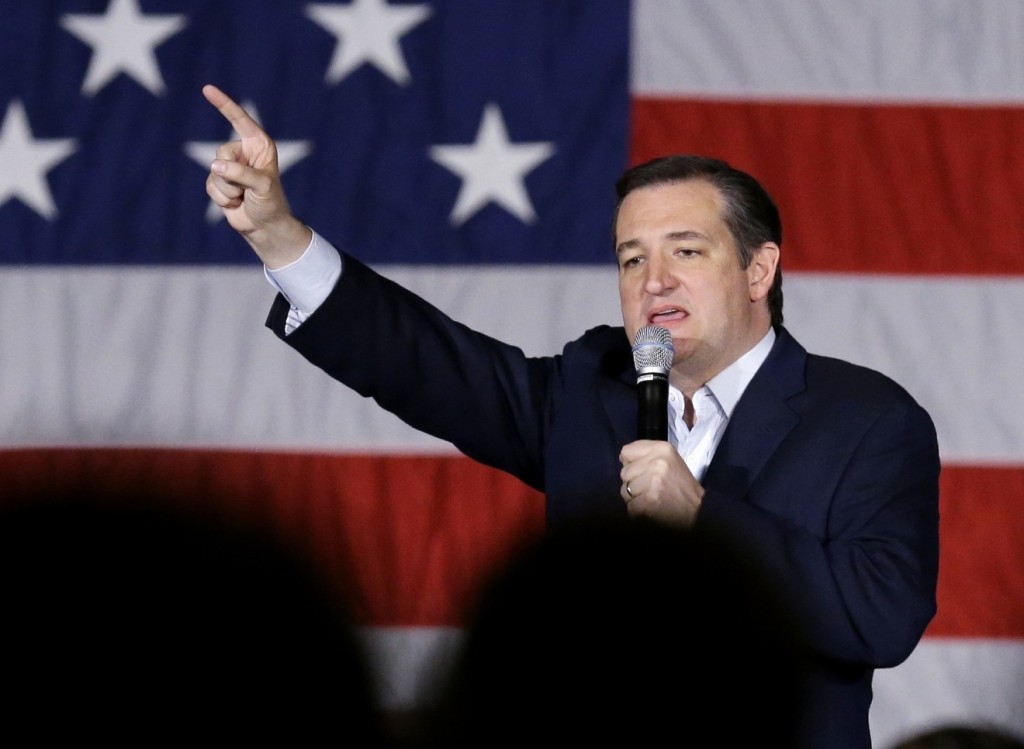
Sen. Ted Cruz is increasingly winning over voters to his presidential bid. He’s still not winning over fellow Republican senators. The Texas Republican is notorious for alienating his colleagues with tactics including pushing a fruitless government shutdown in 2013 and accusing the Senate majority leader of lying. They’re now paying it back by refusing to get on board with his presidential bid even as he emerges as the likeliest alternative to businessman Donald Trump following a commanding win Tuesday night in Wisconsin. “I just haven’t heard any talk about it,” responded Sen. Orrin Hatch, R-Utah, a senior Republican, when asked whether Republican colleagues would be gravitating toward Cruz. “I will tell you that wasn’t the chatter,” said Sen. Dean Heller, R-Nev., after emerging from a closed-door GOP lunch. “I don’t see any rush to judgment,” remarked Sen. Pat Roberts of Kansas, a four-term lawmaker. Of Cruz’s frosty relations with his colleagues, Roberts said: “I think that’s obvious. That’s just the way it is. But in the end result I think all of us would like to support the nominee and do the best we can.” Sen. Lindsey Graham of South Carolina, who has made a half-hearted endorsement of Cruz, predicted Wednesday that more establishment support would be swinging behind the Texas freshman senator. Graham, a short-lived candidate himself, is advancing the argument that while the erratic Trump would destroy the GOP for generations to come by turning off women and minorities, Cruz is at least a reliable Republican with a steady foreign policy outlook who shares his colleagues’ views on most issues. “I think some of Ted’s tactics have hurt the party but the overall vision is far more common,” Graham said. Although Graham also contends Cruz could be electable, his argument for backing Cruz is being dubbed by some pundits the “Lose With Cruz” movement. And it’s falling on deaf ears with some colleagues. “Not yet,” said GOP Sen. Jeff Flake of Arizona, when asked if he’d be backing Cruz. “I’m no fan of Donald Trump, I think I’ve said that before,” Flake added. “But this isn’t over. John Kasich is still in the race, no candidate is likely to have the necessary votes and so I wouldn’t discount Kasich or something else happening.” Sen. Mark Kirk of Illinois, one of the more vulnerable incumbents in November, said of Cruz’s chances of wooing fellow Republican senators: “I would say a slow process with a lot of romance and a lot of discussion would be necessary.” Kirk then demurred on whether he himself would get there. “I’ve been strictly staying out of the presidential because it’s just a minefield for me,” he said. Sen. Cory Gardner, a Colorado Republican who previously supported GOP presidential candidate Sen. Marco Rubio of Florida, told reporters that “Donald Trump is still not going to be the nominee” and “I don’t see a path for Kasich,” the Ohio governor who lagged Cruz and Trump in Wisconsin. Talk of House Speaker Paul Ryan, R-Wis., or another outsider scooping up the nomination in a convention fight? “I think that’s nonsense,” Gardner said. Nonetheless, he was reluctant to commit to Cruz. “Any nominee is going to have to earn my support,” Gardner added. “Just like they’ll have to earn the support of the delegates this weekend in Colorado,” when the state convention officially chooses its delegates. Endangered GOP Sen. Kelly Ayotte of New Hampshire, who has tangled publicly with Cruz over his failed efforts to “defund” both the health care law and Planned Parenthood, sidestepped when asked if she’s coming around to the idea that Cruz will be the nominee. “I’m coming around to more like, ‘It looks like it will be a very interesting convention,’ ” Ayotte said. Cruz himself has lumped in Senate Majority Leader Mitch McConnell, a Kentucky Republican, with other GOP leaders as part of the “Washington cartel.” But campaigning Wednesday in New York City, Cruz claimed that his Wisconsin win would be a “turning point” that showed Republicans were coming together to stand united. The election, he said, “is about unity.”


